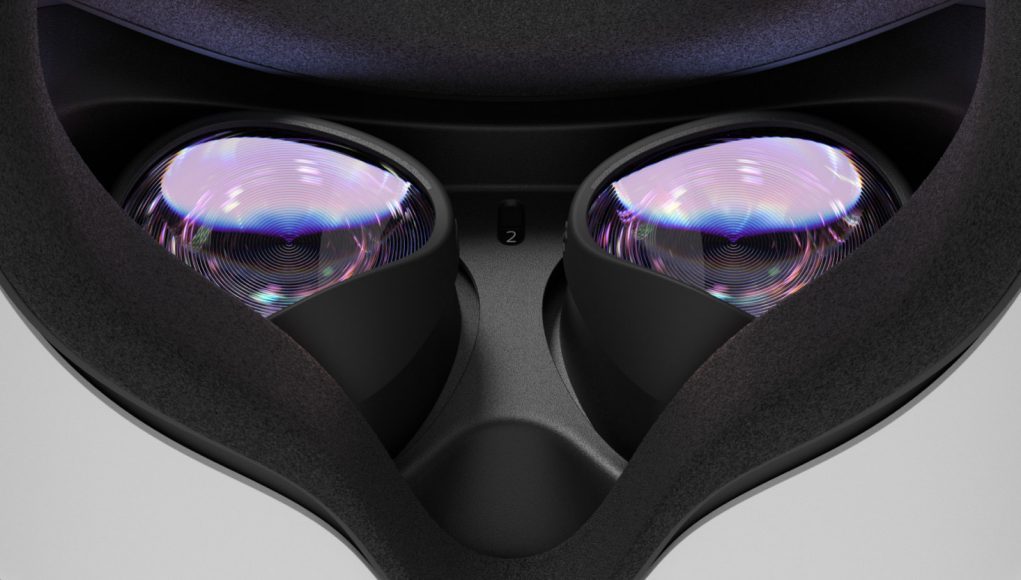Facebook CEO Mark Zuckerberg spoke about the idea of a ‘Quest Pro’ headset back in May, saying that it could include sensors for both face and eye tracking. The v32 firmware release for Oculus Quest last month ostensibly confirms that the company is moving forward with the device, as it contains hidden reference to an “Oculus Quest Pro” headset along with text mentioning both eye and face-tracking.
Reddit user ‘Reggy04’ did some deep-dive sleuthing and has posted a number of strings found within the Quest v32 firmware which not only includes Quest Pro by name, but also notes a few features that would mean a dramatic increase in the number of sensors embedded within the alleged headset.
Sensors are said to improve hand tracking, something that feels a bit like a hit and miss on current-day Quests.
“QUEST PRO ESTIMATES YOUR HAND SIZE AND HOW THEY MOVE SO YOU USE YOUR HANDS INSTEAD OF CONTROLLERS IN VR.\””
Eye-tracking sensors, which can be used for a number of tasks like foveated rendering and smarter UI navigation, are also supposedly onboard. This string of text below refers to an eye-tracking setup which, like many such calibration tests, requires you to look and hold your gaze on virtual objects so the system can correctly model your unique eye movement.
“\”FOLLOW THE TARGET WITH YOUR GAZE\””
“\”EYE CALIBRATION FAILED\””“\”EYE MOVEMENT ESTIMATION COMPLETE\””
Mentions of facial tracking, which is important to social VR interactions, are also found in the v32 firmware. It seems a calibration test is needed here too to get a good bead on how you smile, frown, bare your teeth in anger, and act surprised.
“COPY THE DIFFERENT EXPRESSIONS\””
“\”SMILE NATURALLY UNTIL THE CALIBRATION IS COMPLETE. YOU MAY NEED TO HOLD THIS POSE FOR A FEW SECONDS.\””
“\”SHOW AN ANGRY EXPRESSION UNTIL THE CALIBRATION IS COMPLETE. YOU MAY NEED TO HOLD THIS POSE FOR A FEW SECONDS.\””
“\”FROWN NATURALLY UNTIL THE CALIBRATION IS COMPLETE. YOU MAY NEED TO HOLD THIS POSE FOR A FEW SECONDS.\””
“\”SHOW A SURPRISED EXPRESSION UNTIL THE CALIBRATION IS COMPLETE. YOU MAY NEED TO HOLD THIS POSE FOR A FEW SECONDS.\””
“\”FAILED TO CALIBRATE THE EXPRESSION. RETRYING…\””
“\”FACE MOVEMENT ESTIMATION COMPLETE\””
Further in the firmware, Reggy04 also find mention of sliding lenses, which could denote that Quest Pro will include some form of interpupillary distance (IPD) hardware adjustment that, much like the original Oculus Rift, will require you to move the lenses to get a clear picture.
“\”SLIDE THE LENSES CLOSER TOGETHER OR FURTHER APART TO IMPROVE VISUAL CLARITY.\””
There’s mention of depth adjustment too, which sounds similar to how it’s done in Rift S. Reggy04 notes that the string below was specifically added in v32, so it’s possible it’s also referring to Oculus Quest Pro too.
“\”PRESS AND HOLD THE DEPTH BUTTON AND MOVE THE HEADSET CLOSER OR FURTHER AWAY FROM YOUR FACE. THE LENSES SHOULD BE CLOSE TO YOUR EYES, BUT NOT CAUSE DISCOMFORT.\””
“\”ADJUST LENS DEPTH\””
“\”TURN THE WHEEL LEFT OR RIGHT TO ADJUST TIGHTNESS. THE FRONT PADDING SHOULD FIT DIRECTLY OVER YOUR FOREHEAD.\””
An all-digital version of Facebook Connect, the company’s AR/VR developer conference, is coming October 28th. We’re hoping to learn more then since Connect has been a historic venue for insights into the company’s research.
We’re also hoping to learn more about the company’s Project Aria AR glasses, future plans for its new Ray-Ban Stories camera glasses, and how experimental pass-through AR capabilities are coming on Quest 2.







